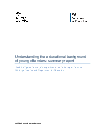Understanding the educational background of young offenders: 90% were persistently absent from school

This summary report sets out the key findings from an analysis of young offenders in the youth justice system.
Key findings
For those young offenders sentenced in 2014 that were at the end of Key Stage 2 (KS2) in academic year 2007/08:
- Those sentenced to custody had lower attainment at KS2 than those given Youth Rehabilitation Orders (YROs), Referral Orders (ROs) or cautions. 47% of those sentenced to custody for less than 12 months achieved the expected level in Maths at KS2. 56% achieved the expected level in reading and 28% achieved the expected level in writing at
- The results for those given a custodial sentence of 12 months or longer were marginally better with 52% achieving the expected level at KS2 in Maths, 58% in reading and 33% in
For those young offenders sentenced in 2014 that were at the end of Key Stage 4 (KS4) in academic year 2012/13:
- Those given custodial sentences had lower attainment at KS4 than those given community sentences or cautions. 1% of those sentenced to less than 12 months in custody achieved 5 or more GCSEs (or equivalents) graded A* – C including English and
- Of those sentenced to a referral order, 14% achieved 5 or more GCSEs (or equivalents) graded A* – C including English and Maths. The equivalent figure for those given a caution was 17%.
For those young offenders sentenced in 2014 that were at the end of KS4 in academic year 2012/13:
- 44% of those given custodial sentences less than 12 months were known to be eligible for Free School Meals (FSM). For those given custodial sentences of 12 months or longer, 44% were known to be eligible for FSM. The equivalent figure for YROs was 40%.
- 45% of those sentenced to less than 12 months in custody were recorded as having Special Educational Needs (SEN) without a statement and 28% were recorded as having SEN with a statement.
- 46% of those sentenced to YROs were recorded as having SEN without a statement. The equivalent figures for those sentenced to referral orders was 42% and for cautions was 38%.
For those young offenders sentenced in 2014 that were recorded as being 16 or 17 years old on their sentence date:
- 31% of those sentenced to custody for 12 months or longer were looked after at 31st March 2014. The equivalent figure for those sentenced to custody for less than 12 months was 27%.
- Over 90% of those sentenced to custody had a previous record of being persistently absent from school (missing 10% of sessions within a school year).
- 23% of those sentenced to less than 12 months in custody have been permanently excluded from school prior to their 2014 sentence date. For those sentenced to 12 months or longer in custody, 16% have a previous record of being excluded from school prior to
Documents

Understanding the educational background of young offenders: amended summary report
PDF, 686KB, 7 pages

Understanding the educational background of young offenders: summary report
PDF, 499KB, 6 pages
This file may not be suitable for users of assistive technology. Request an accessible format.
If you use assistive technology (such as a screen reader) and need aversion of this document in a more accessible format, please email [email protected].Please tell us what format you need. It will help us if you say what assistive technology you use.
Details
These are the headline results from a data sharing project between the Department for Education (DFE) and the Ministry of Justice (MOJ). The analysis focuses on those young offenders sentenced in 2014 matched to DFE data.
The amendment adds a breakdown of education characteristics by a more granular categorisation of custodial sentence lengths.
Published 12 December 2016
Last updated 1 August 2019 + show all updates
- Amended summary report published.
- First published.











Responses